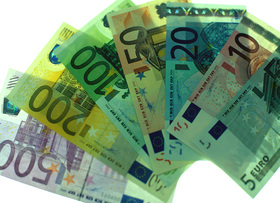Common currency

- (Photo: European Commission)
Single currency
In principle, a single currency may exist in addition to national currencies. The Economic and Monetary Union introduces not only a common but a single currency. The euro replaces and prohibits national currencies.
For the first time in modern world history, originally 12 countries and now a further 6 have abandoned their national currencies in favor of a common currency unit. A single currency means a single interest rate and exchange rate.
The euro is the EU's single currency. 12 of 15 EU countries participated in the euro from the start.
Denmark, England and Sweden chose to stand outside. In 2014 there were 18 member states of the Eurozone. The new member states are all legally obliged to take part in the single currency when they fullfil the criteria. Sweden was legally obliged as well. Then the German Constitutional Court decided that Germany was not legally obliged in spite of the Treaty text. After that it became politically impossible to insist on Swedish membership in face of a strong No vote in a euro referendum in 2003.
All new EU countries must join the euro when they are ready. But they can only participate if they meet certain economic criteria, which were also fullfilled by the current Euro-countries when they joined.
Links
http://europa.eu/pol/emu/index_en.htm
